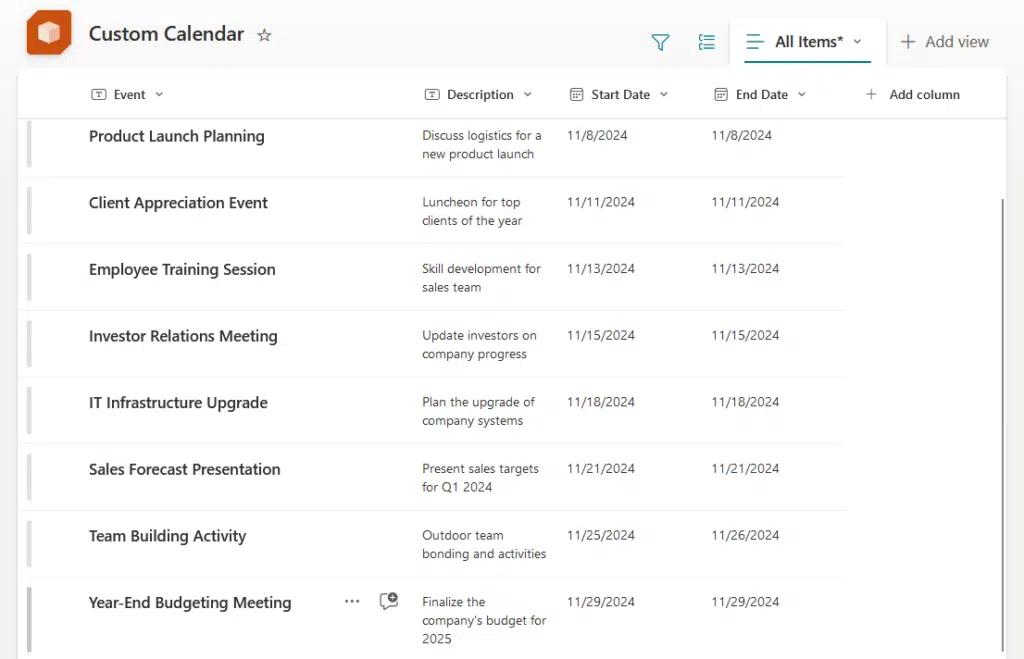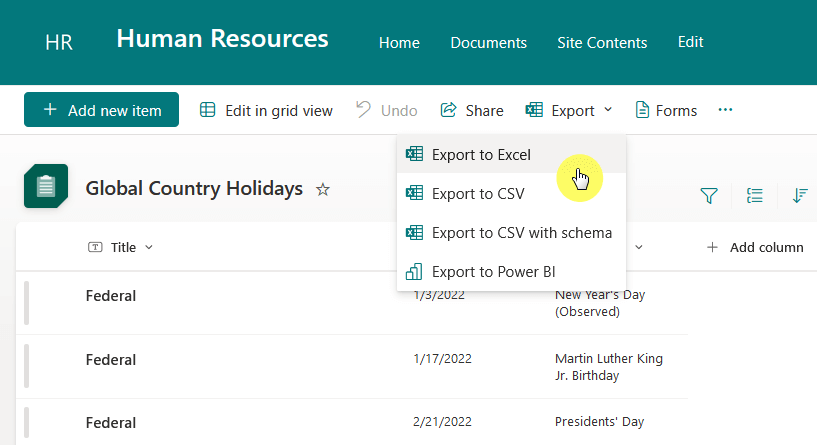Last Updated on January 24, 2025
Thinking of using SharePoint this way?
In this guide, let’s talk about understanding SharePoint as a database and its limitations for this.
Let’s get started.
Table of Contents:
Well, yes, and no.
SharePoint is often used as a lightweight alternative to traditional databases, with reliance on lists to store and manage data.
Here’s how it “can” work:
- Data storage in lists stored in rows and columns
- Lists can include various field types like text, numbers, dates, etc.
- Has built-in search tools
- Custom views
On the downside, while SharePoint can mimic a database, it’s designed for collaboration, not heavy data processing.
It’s suitable for small to medium-sized datasets and excels in environments where teamwork and data sharing are priorities.
For complex data relationships or high-volume transactions, a traditional relational database might be more appropriate.
Sign up for exclusive updates, tips, and strategies
Now let’s talk about what you would gain if you do use SharePoint as a database.
Take note that many of the advantages “take advantage” of the collaboration features of SharePoint Online.
Here they are:
- User-friendly interface, unlike traditional relational databases
- Integration with Microsoft tools like Excel and Power BI
- Multiple users can work on data simultaneously
- Automatic tracking of changes, with history versions
- Customizable lists and libraries
Your database would look like this:

Another thing I want to mention is its security features, such as permission settings and encryption, that protect data effectively.
👉 Related: Benefits of Using SharePoint Online: For End Users
While SharePoint can store and manage data, it has some limitations that affect its use as a full-fledged database.
Here are the key limitations:
- No support for relational database features like foreign keys
- Struggles with large datasets
- No advanced SQL-style queries for detailed analysis
- Scalability challenges in data volume
For example, if you need to do more analysis and computation, it’s usually better to export a list to Excel instead.

These limitations mean it’s better suited for simpler use cases, such as team collaboration or light data storage.
👉 Related: SharePoint Online Limitations: How to Manage Them
As I explained, you may need another platform for complex or high-performance database requirements.
Some popular options include:
- SQL Server
- Microsoft Access
- MySQL
- PostgreSQL
- Google Cloud Firestore
Each option has its own strengths.
For instance, SQL Server is powerful for enterprises, while MySQL and PostgreSQL are budget-friendly and customizable.
Selecting the right database depends on your project’s scale, complexity, and integration requirements.
Do you have any questions about building a database in SharePoint Online? Let me know below.
For any business-related queries or concerns, contact me through the contact form. I always reply. 🙂

